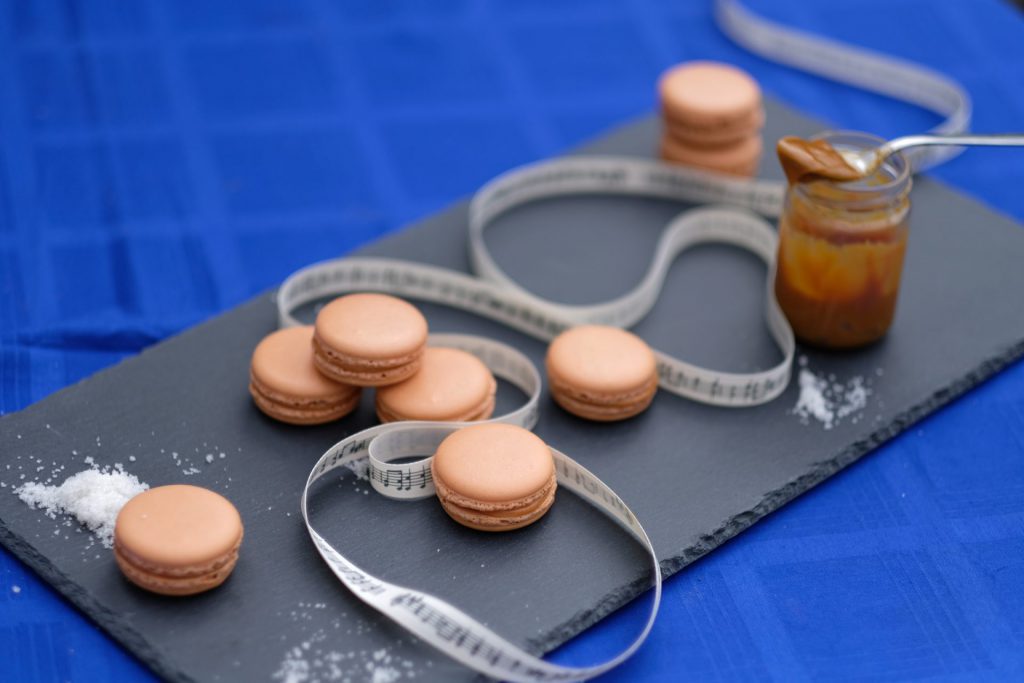French Macarons, Products
Salted Caramel Macarons
Salted butter caramel, a deliciously irresistible combination of caramel, salt and butter, has a whole story behind it and its ingredients!
Brittany salt
The 14th century in France was a key period when the virtues of salt were discovered with regard to food preservation. In 1343, King Philip VI introduced the “gabelle”, a salt tax, already enforced elsewhere in the Middle Ages. Indeed, salt was then the subject of a royal monopoly and it was kept in salt granaries (warehouses for table salt) and the population could only afford to buy it in minute quantities because of the heavy tax. However, in Brittany, people did not have to pay the gabelle because Brittany was one of the Free Countries. Salt here was therefore very cheap, and so its use, although not limited to butter making, resulted in increased production of salted butter. Cooks would probably have gotten into the habit, very quickly, of using it many in different recipes.


Maldon Salt
As for England, the Maldon Salt Company has been hand harvesting its world famous salt since 1882. King Philip of France may have taxed salt but Queen Elizabeth, in 2010, was welcomed on a visit to the salt works in the picturesque coastal town of Maldon in Essex. Two years later, the company was granted a Royal Warrant as official purveyors of sea salt – quite an honour!
The beautiful pyramid shape of the salt crystals is the company’s trademark and forms during crystallisation of the salt from solution. Four generations of the Osborne family have overseen hand harvesting of the naturally formed salt flakes but Maldon has witnessed salt making for almost a thousand years, in part because the nature of the climate and winding estuaries of this flat part of Essex result in a high concentration of salt in the sea water.
Caramel
We’ve heard about the salt but what about the caramel? The English word caramel comes unchanged from French and that is borrowed from the Spanish caramelo, itself possibly from the Portuguese word caramelo. Most likely that comes from the Latin word calamellus, meaning sugar cane. So the word is definitely European!The invention of caramel is attributed to Henri Le Roux, actually a French chocolatier from Quiberon (Morbihan), who, in 1977, made this recipe… a candy! He decided to invent a simple confectionery that was different from the products usually sold by his competitors: after three months of testing, he developed a semi-salted butter caramel to which he added nuts, hazelnuts and crushed almonds, resulting in a unique texture. Thanks to this sweet, he became famous all over the world.


A versatile delicacy
Today, salted butter caramel remains the Breton star par excellence. It can be enjoyed as a sauce, soft square, hard candy, lollipop or spread (salidou). It is prepared with caramelized sugar, salted butter and usually fresh cream to obtain a smooth texture. Our caramel is home-made, of course, and we use the excellent and more local Maldon Salt along with English butter. Salted butter caramel is of course perfect for filling our macarons. Don’t hesitate any longer!



